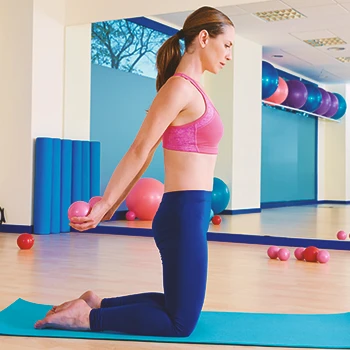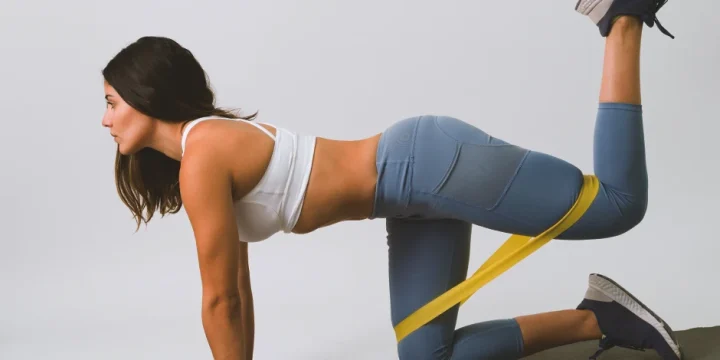Shoulder pain can greatly affect daily life. To ease pain and boost shoulder strength and flexibility, integrating specific exercises and stretches is key.
In my experience as a fitness trainer, I've seen how these methods significantly reduce discomfort, improve mobility, and strengthen shoulder muscles.
This article offers expert advice and effective techniques for relieving shoulder pain and tightness.
Quick Summary
- Cross body shoulder stretch, chest expansion, and doorway shoulder stretch effectively improve shoulder strength and flexibility.
- Incorporating these exercises and stretches into your routine can help alleviate shoulder pain, increase your range of motion, and promote better shoulder health.
- According to studies published in the National Library of Medicine, rotator cuff injuries, often resulting from overuse, repetitive motions, or trauma, can lead to strains, tears, or tendinitis in the surrounding muscles and tendons, causing significant shoulder pain and restricted range of motion.
- Based on my experience, integrating the cross-arm stretch, chest expansion, neck release, and doorway shoulder stretch exercises into your daily routines can significantly enhance shoulder function and reduce discomfort..
Best Workouts and Stretches for Shoulder Pain

Incorporating specific lengthening and strengthening exercises and stretches into your routine can be highly beneficial when managing shoulder pain.
Here are four shoulder stretches and exercises that can help you relieve shoulder pain with minimal equipment.
Crossover Arm Stretch
The crossover arm stretch helps to increase flexibility, relieve tension, and improve range of motion.
To perform the crossover arm stretch:
- Stand tall or sit upright with proper posture.
- Extend your right arm straight across your chest.
- Bend your left arm and use your left hand to gently pull your right upper arm closer to your body.
- Feel the stretch in the back of your right shoulder and upper back. Hold the stretch for 15-30 seconds.
- Release the stretch and repeat on the other side by extending your left arm across your chest and using your right hand to assist in the stretch. Perform 2-3 sets on each side.
Chest Expansion

Chest expansion exercises are beneficial for improving posture, stretching the chest muscles, and increasing overall flexibility.
To perform the chest expansion exercise:
- Stand tall with your feet shoulder-width apart and maintain good posture.
- Interlace your fingers behind your back, with your palms facing inward and your arms straight.
- Gently squeeze your shoulder blades together and lift your interlaced hands away from your body.
- As you lift your hands, inhale deeply and expand your chest, feeling a stretch across your chest and shoulders. Hold the stretch for 15-30 seconds.
- Exhale and slowly release your hands back to the starting position. Repeat the exercise for 2-3 sets.
Neck Release
The neck release exercise is a helpful stretch for relieving neck and upper back muscle tension.
Here's how to perform a neck release:
- Sit or stand comfortably with good posture, ensuring your spine is aligned.
- Relax your shoulders and let your arms rest by your sides.
- Tilt your head to the right, bringing your right ear towards your right shoulder, targeting the left side of your neck, and providing a shoulder stretch for the left shoulder.
- Place your right hand on the left side of your head and gently apply a slight downward pressure, deepening the stretch specifically on the left side. Hold it for 15-30 seconds.
- Release the stretch and return your head to the neutral position.
- Repeat the stretch on the opposite side, tilting your head to the left and placing your left hand on the right side of your head. This will provide a stretch for the right shoulder. Perform 2-3 sets on each side.
Read More: Best Neck Exercises
Doorway Shoulder Stretch

The doorway shoulder stretch is an effective exercise for stretching the shoulders and chest muscles.
To perform a doorway shoulder stretch:
- Stand facing a doorway with your feet hip-width apart.
- Raise your right arm to shoulder height and bend it at a 90-degree angle, placing your forearm against the doorframe.
- Step forward with your right foot, keeping it aligned with your hip.
- Gently lean forward your body, allowing your chest to move through the doorway while keeping your forearm against the doorframe.
- You should feel a stretch in the front of your right shoulder and chest. Hold for 15-30 seconds.
- Release the stretch and repeat on the other side by raising your left arm and placing your left forearm against the doorframe. Perform 2-3 sets on each side.
"Incorporating a combination of targeted exercises and stretches into your fitness routine can be a game-changer for shoulder pain. These exercises not only help alleviate discomfort but also promote better posture, strength, and overall shoulder health."
- Jessica Evans, Fitness Expert
Understanding the role of nutrition in muscle and joint health can further enhance recovery. Foods rich in omega-3 fatty acids, such as salmon and walnuts, and those high in vitamin C, like oranges and strawberries, can help reduce inflammation and aid in tissue repair.
Moreover, incorporating stress management techniques, such as deep breathing and mindfulness, can alleviate the tension often held in the shoulders due to psychological stress.
Why Is It Important to Stretch Your Shoulders?

It is important to stretch your shoulders to increase their mobility, prevent injuries, and stabilize the joint.
Let's examine these reasons in detail:
Increase Shoulder Mobility & Flexibility
From my experience, regular shoulder stretching is key to enhancing flexibility and range of motion.
Several of my clients, who initially had stiff shoulders, have reported a noticeable improvement in their mobility after incorporating these stretches into their daily routines.
This can be particularly beneficial if you have tight or stiff shoulders. Increased flexibility allows for greater freedom of movement, making everyday tasks and physical activities easier and more comfortable.
Learn More: Shoulder Mobility Exercises for Increased Motion Range
Prevent Future Shoulder Injuries
In my practice, I've observed that maintaining flexibility in shoulder muscles and tissues significantly lowers injury risks.
When the muscles are properly stretched, they are better able to handle sudden movements, strains, and stressors.
Additionally, balanced shoulder flexibility can help prevent imbalances in muscle strength, reducing the risk of overcompensation and potential injuries.
Stabilize the Joint

The shoulder joint is inherently unstable compared to other major joints.
Through regular stretching, many of my clients have not only maintained but also enhanced the flexibility and strength of their shoulder muscles.
This consistent practice has been crucial in supporting their shoulder joint stability and overall mobility.
When the muscles are balanced and adequately conditioned, they can better support the shoulder joint during movements, reducing the risk of potential injuries.
What Causes Shoulder Pain?

Rotator Cuff Injuries
Rotator cuff injuries can occur due to overuse, repetitive motions, or trauma, leading to strains, tears, or tendinitis in the muscles and tendons that surround the shoulder, including the rotator cuff and the shoulder blade.
These injuries can cause significant shoulder pain and limit your range of motion, as shown by studies published in the National Library of Medicine [1].
Frozen Shoulder (Adhesive Capsulitis)
The shoulder capsule becomes thick and tight, leading to restricted movement and pain. It can develop following an injury, surgery, or certain medical conditions.
Shoulder Bursitis
Inflammation of the bursa, the small fluid-filled sacs that provide cushioning around the joint and shoulder blade, can cause shoulder pain.
According to Physiopedic, bursitis is often a result of repetitive motions, trauma, or underlying inflammatory conditions [2].
How to Prevent Shoulder Pain and Tightness

To alleviate shoulder pain and tightness, make shoulder stretches a daily habit. Yoga, in particular, boosts flexibility and reduces stress, aiding in chronic shoulder pain management.
From my coaching experience, clients who practice good posture throughout the day and use supportive sleeping arrangements often see a marked decrease in shoulder pain.
In my coaching sessions, I always stress the importance of proper lifting techniques and avoiding repetitive overhead movements.
For those who can't escape repetitive motions, I recommend regular breaks with stretching exercises, a strategy that has effectively prevented muscle fatigue and tightness among my clients.
FAQs
Can Stretching Relieve Shoulder Pain?
Yes, stretching exercises can effectively relieve shoulder pain by promoting muscle relaxation, improving the range of motion, enhancing circulation, and preventing injuries.
Can Shoulder Tendons Heal Naturally?
Yes, shoulder tendons have the potential to heal naturally, depending on the extent and type of injury. Tendon healing is a complex process that involves inflammation, cell proliferation, and tissue remodeling.
References:
- https://www.ncbi.nlm.nih.gov/books/NBK547664/
- https://www.physio-pedia.com/Shoulder_Bursitis
About The Author
You May Also Like






